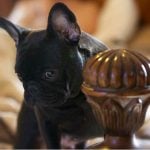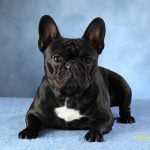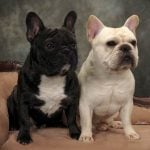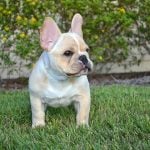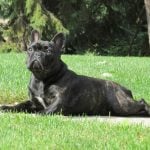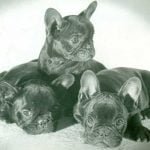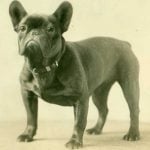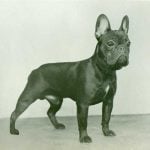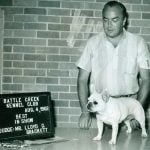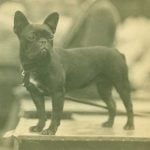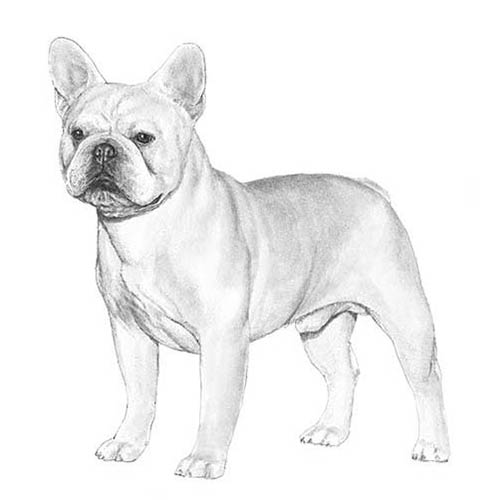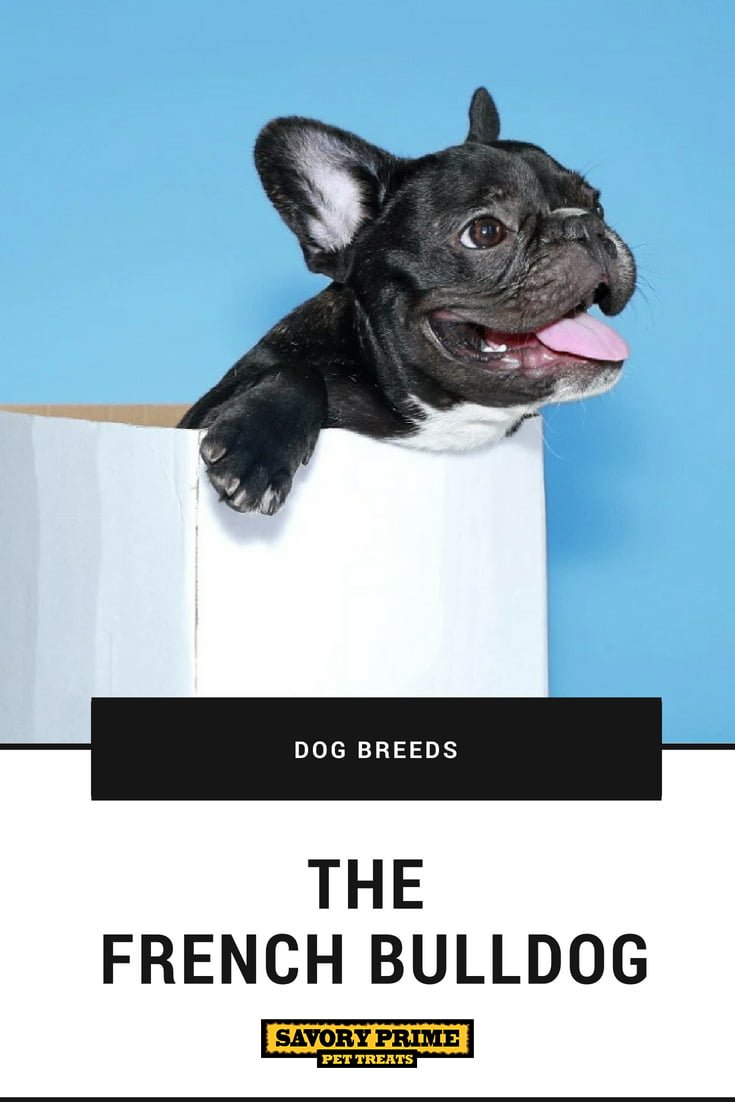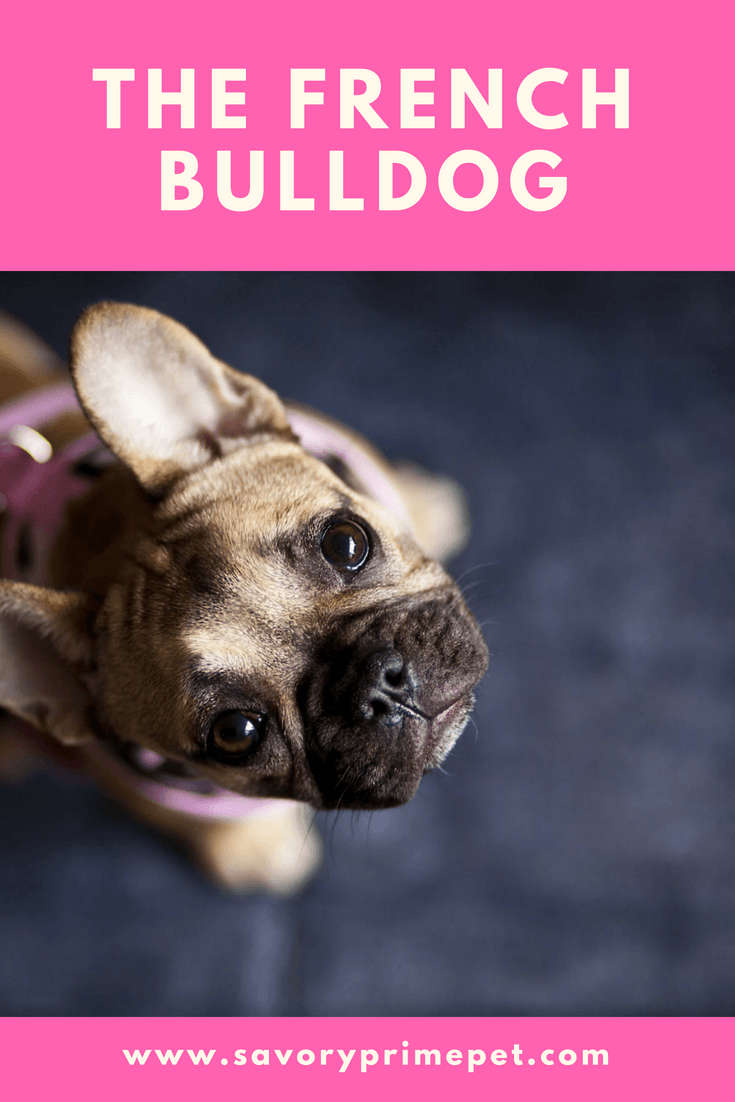The one-of-a-kind French Bulldog, with his large bat ears and even disposition, is one of the world’s most popular small-dog breeds, especially among city dwellers. The Frenchie is playful, alert, adaptable, and completely irresistible.
- Temperament: Adaptable, Playful, Smart
- AKC Breed Popularity: Ranks 6 of 192
- Height: 11-13 inches
- Weight: under 28 pounds
- Life Expectancy: 10-12 years
- Group: Non-Sporting Group
About the French Bulldog
The French Bulldog resembles a Bulldog in miniature, except for the large, erect “bat ears” that are the breed’s trademark feature. The head is large and square, with heavy wrinkles rolled above the extremely short nose. The body beneath the smooth, brilliant coat is compact and muscular.
The bright, affectionate Frenchie is a charmer. Dogs of few words, Frenchies don’t bark much—but their alertness makes them excellent watchdogs. They happily adapt to life with singles, couples, or families, and do not require a lot of outdoor exercises. They get on well with other animals and enjoy making new friends of the human variety. It is no wonder that city folk from Paris to Peoria swear by this vastly amusing and companionable breed.
Care
- NUTRITION
- GROOMING
The Frenchie’s short coat sheds minimally. Weekly brushing with a medium-bristle brush, a rubber grooming mitt or tool, or a hound glove will help to remove shed hair and keep him looking his best. Brushing promotes new hair growth and distributes skin oils throughout the coat to help keep it healthy. A Frenchie’s facial folds should be kept clean and dry. The Frenchie’s nails should be trimmed regularly, as overly long nails can cause him pain.
- EXERCISE
A short walk or outdoor play session with their owner each day should provide enough exercise to keep the French Bulldog in shape. Frenchies enjoy participating in canine sports such as obedience, agility, and rally. As a flat-faced breed, however, they are prone to breathing difficulties and should never be allowed to exert themselves in hot or humid weather.
- TRAINING
Early socialization and puppy training classes are recommended. Exposing the puppy to a wide variety of people, places, and situations will help him develop into a well-adjusted adult. Puppy training classes serve as part of the socialization process, promote good behavior, and help the owner learn to recognize and correct bad habits. Frenchies have big personalities and can need a fair amount of training to make them civilized companions. They can be stubborn, but at heart, they’re people pleasers and therefore easy to train. The proper motivation (such as food) and making a game of the process will ensure their cooperation.
- HEALTH
Because of their front-heavy structure, Frenchies cannot swim and should never be left unattended near a tub, pool, or body of water. Like all flat-faced breeds, Frenchies are prone to breathing problems and do poorly in hot or humid weather. Flat-faced breeds are also more sensitive to anesthesia. Frenchies occasionally have eye conditions such as cherry eye, juvenile cataracts, or entropion, and skin allergies and autoimmune skin disorders also are known to occur. A responsible breeder will take advantage of available tests to screen breeding stock for conditions that can affect the breed.
Recommended Health Tests from the National Breed Club:
- Hip Evaluation
- Patella Evaluation
- Ophthalmologist Evaluation
- Cardiac Exam
History
In the mid-1800s, a toy-size Bulldog found favor in some English cities, including Nottingham, then a center for lace making. The toy Bulldog became something of a mascot for Nottingham’s lace makers. This was the height of the Industrial Revolution in England, and such “cottage industries” as lace making were increasingly threatened. Many in the lace trade relocated to northern France, and of course, they brought their toy Bulldogs with them.
The little dogs became popular in the French countryside where lace makers settled. Over a span of decades, the toy Bulldogs were crossed with other breeds, perhaps terriers and Pugs, and, along the way, developed their now-famous bat ears. They were given the name Bouledogue Français.
Paris eventually discovered the delightful new breed, and thus began the Frenchie’s reputation as city dog par excellence. The breed came to be associated with Paris café life, and with the bon vivants and fancy ladies who sought nocturnal pleasures in Parisian dancehalls. Edgar Degas and Toulouse-Lautrec depicted the Frenchie in paintings of the Paris demimonde.
By the end of the 19th century, the Frenchie’s popularity had spread across Europe and to America. The breed was a tougher sell in England. The Bulldog was a national symbol, and it rankled many Englishmen that their age-old rivals, the French, would dare adapt it to their purposes.
American devotees of the early 1900s contributed to the breed by insisting that the bat ear, as opposed to the “rose ear,” was the correct Frenchie type. It is by this distinctive feature that the Frenchie is instantly recognizable the world over.
The Breed Standard
GENERAL APPEARANCE
The French Bulldog has the appearance of an active, intelligent, muscular dog of heavy bone, smooth coat, compactly built, and of medium or small structure. Expression alert, curious, and interested. Any alteration other than removal of dewclaws is considered mutilation and is a disqualification. Proportion and Symmetry – All points are well distributed and bear good relation one to the other; no feature being in such prominence from either excess or lack of quality that the animal appears poorly proportioned.
HEAD
Head large and square. Eyes dark in color, wide apart, set low down in the skull, as far from the ears as possible, round in form, of moderate size, neither sunken nor bulging. In lighter colored dogs, lighter colored eyes are acceptable. No haw and no white of the eye showing when looking forward. Ears Known as the bat ear, broad at the base, elongated, with round top, set high on the head but not too close together, and carried erect with the orifice to the front. The leather of the ear fine and soft. Other than bat ears is a disqualification. The top of the skull flat between the ears; the forehead is not flat but slightly rounded.
NECK, TOPLINE, BODY
The neck is thick and well arched with loose skin at the throat. The back is a roach back with a slight fall close behind the shoulders; strong and short, broad at the shoulders and narrowing at the loins. The body is short and well rounded. The chest is broad, deep, and full; well ribbed with the belly tucked up. The tail is either straight or screwed (but not curly), short, hung low, thick root and fine tip; carried low in repose.
FOREQUARTERS
Forelegs are short, stout, straight, muscular and set wide apart. Dewclaws may be removed. Feet are moderate in size, compact and firmly set. Toes compact, well split up, with high knuckles and short stubby nails.
HINDQUARTERS
Hind legs are strong and muscular, longer than the forelegs, so as to elevate the loins above the shoulders. Hocks well let down. Feet are moderate in size, compact and firmly set. Toes compact, well split up, with high knuckles and short stubby nails; hind feet slightly longer than forefeet.
COAT
The coat is moderately fine, brilliant, short and smooth. Skin is soft and loose, especially at the head and shoulders, forming wrinkles.
Recent Pet Posts
Blog Categories
Product categories
- Accessories (9)
- Chicken & Veggie Wraps (8)
- Grillers Jerky Tenders (4)
- Jerky Treats (10)
- Made in the USA (9)
- Non-Rawhide Treats (28)
- Beggar Bone (11)
- Bully Sticks (4)
- Butcher Bone (4)
- Cod Skin Fish Treats (3)
- Pork Skin Twists (2)
- Pressed Rawhide Bones & Rolls (16)
- Bones & Rolls (6)
- Pressed Rawhide Bulk (6)
- Twist Sticks (4)
- Savory Munchies (13)
- Supreme Bones & Rolls (48)
- American Rawhide Bulk (16)
- Rawhide Bones (14)
- Rawhide Chips (6)
- Rawhide Rolls & Sticks (12)
- Uncategorized (8)




